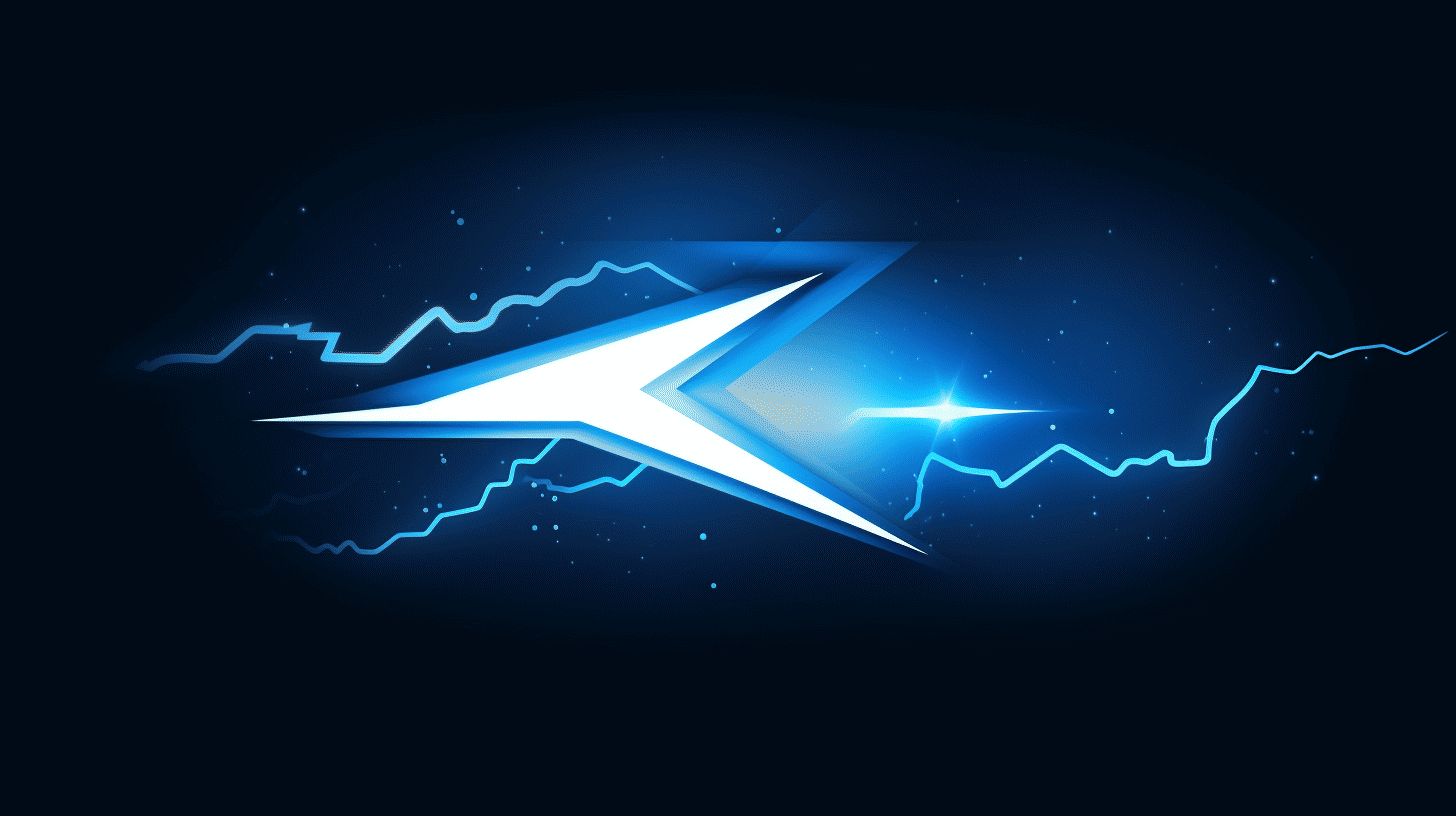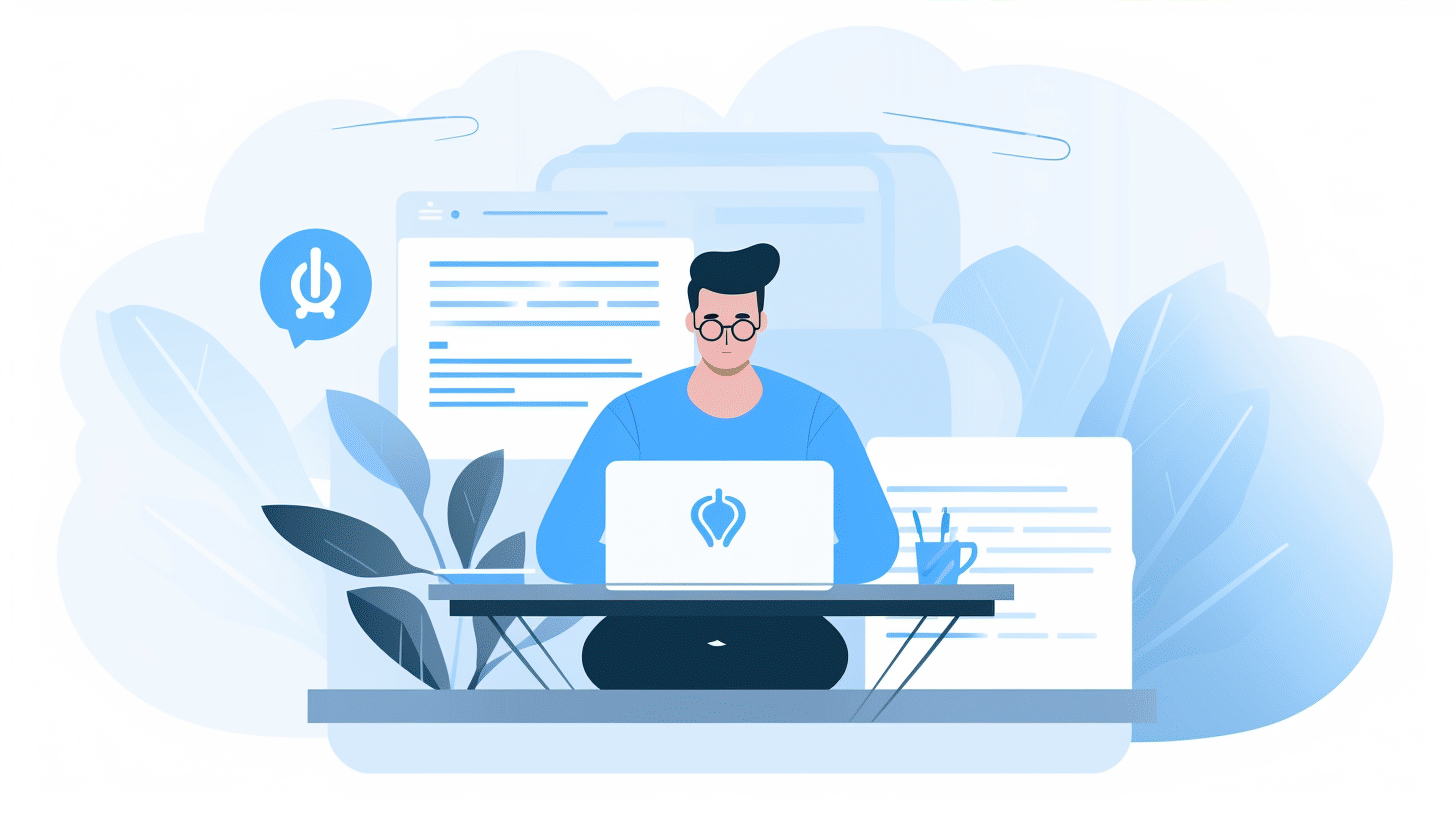對網站來說,速度很重要。在當今快節奏的數位世界中,用戶對載入緩慢的網站缺乏耐心。事實上,Google進行的一項研究發現,如果網站載入時間超過 3 秒,53% 的行動用戶就會放棄該網站。僅僅由於載入時間緩慢,就損失了大量潛在訪客。
在本文中,我們將探討網站載入時間對使用者行為和跳出率的影響,討論為什麼快速載入時間對您的 WordPress 網站至關重要,並重點介紹一些可用於優化網站效能的可行步驟。
因此,如果您想提供無縫且愉快的用戶體驗,同時提高搜尋引擎排名,那麼是時候深入研究網站載入時間的世界,並了解如何提高 WordPress 網站的速度。
網站載入時間的影響
在當今快節奏的數位世界中,注意力的持續時間轉瞬即逝,競爭也非常激烈,網站載入的速度決定網站的成敗。加載緩慢的網站可能會讓訪客感到沮喪,並阻止他們參與內容或完成所需的操作。另一方面,快速加載的網站提供流暢、愉快的用戶體驗,鼓勵訪客停留更長時間,進一步探索,並有可能轉換為客戶。讓我們探討網站載入時間的影響以及它在線上領域的重要性。
平均載入時間統計
為了充分理解網站載入時間的重要性,讓我們來看看一些令人大開眼界的統計數據:
- 平均而言,網頁在桌面上完全加載需要 10.3 秒,在行動裝置上需要 27.3 秒[1]。這些數字乍看之下似乎無關緊要,但它們可以對用戶參與度和滿意度產生重大影響。
- 研究表明,如果加載時間超過三秒,40% 的訪客將離開網站[1]。這意味著加載緩慢的網站可能會損失近一半的潛在流量,從而影響其可見度和轉換潛力。
- 隨著技術的進步和用戶期望的提高,平均網站載入時間一直在穩步縮短。 2023 年,桌面端平均載入時間預計為 2.5 秒,行動端為 8.6 秒[1]。這強調了企業和網站所有者需要不斷優化其網站的速度和效能。
訪客行為與跳出率
與網站載入時間直接相關的關鍵指標是跳出率。跳出率是指僅瀏覽一頁後離開網站的訪客的百分比。高跳出率可能表示網站缺乏參與度或不滿意。
研究表明,網站載入時間和跳出率之間存在很強的相關性。例如,載入時間為 15 秒的網站的平均跳出率為 69%[1]。這意味著如果載入時間為 15 秒,近 70% 的訪客將離開網站。相反,快速加載的網站可以顯著降低跳出率並提高用戶參與度和轉換率。
為了減輕載入時間緩慢的負面影響並確保最佳的使用者體驗,請考慮實施 WordPress 速度優化技術。這些技術專門用於增強網站效能並減少載入時間。透過優化 WordPress 網站的各種元素(例如快取、圖像優化和程式碼縮小),您可以為訪客提供無縫且快速的體驗。
請記住,當涉及網站加載時間時,每一秒都很重要。優先考慮速度和效能會對用戶參與度、流量以及最終線上企業的成功產生深遠影響。
[1]: WordPress 速度優化技術
快速網站載入時間的重要性
在當今快節奏的數位世界中,使用者期望在線上存取資訊或購買產品時獲得即時滿足。等待網站載入就像等待緩慢的電梯一樣——這很令人沮喪,而且它會讓你想要點擊「後退」按鈕並找到更快的替代方案。這就是為什麼網站載入時間對於用戶體驗、參與度以及最終線上形象的成功至關重要。讓我們來看看為什麼快速網站載入時間應該成為每個網站所有者的首要任務的一些重要原因。
谷歌的推薦
谷歌作為搜尋引擎巨頭,對網站排名有重大影響力。眾所周知,他們對自己的演算法守口如瓶,但他們明確表示的一件事是網站速度是一個排名因素。 Google 的 John Mueller 甚至表示「建議快速網站載入時間少於 2 至 3 秒」。當您的網站載入速度很快時,Google 機器人可以更有效地抓取您的網頁並為其編制索引,從而提高您在搜尋引擎結果中排名更高的機會。另外,更快的網站可以提供更好的用戶體驗,這是Google高度重視的。
WordPress 和行動裝置載入時間
WordPress 被稱為世界上最受歡迎的內容管理系統 (CMS) 之一,它已採取措施確保在其平台上建立的網站快速加載,尤其是在行動裝置上。隨著透過智慧型手機造訪網站的用戶數量不斷增加,擁有一個適合行動裝置且載入速度快的網站至關重要。根據數據,WordPress 是行動裝置上頁面載入時間最短的之一。
但為什麼行動裝置載入時間至關重要?想想您如何在手機上瀏覽互聯網 - 您可能在旅途中尋找快速資訊或進行購買。如果網站載入時間過長,您更有可能放棄它並轉向競爭對手的網站。透過優化您的 WordPress 網站以實現快速移動載入時間,您不僅可以改善使用者體驗,還可以增加將訪客轉換為客戶的機會。
獲得這些技能不僅可以提高網站的速度,而且可以透過執行幾個簡單的步驟來提高網站的效率。增強您的 WordPress 網站的效能提供了 10 個經過驗證的技巧來優化您的 WordPress 網站的效能。從利用快取機製到減少圖片大小,這些技巧將幫助您提高網站的載入時間和整體效能。
請記住,在網路世界中,每一秒都很重要。快速的網站載入時間對於贏得和失去潛在客戶至關重要。因此,請優先考慮速度優化,以確保您的網站提供無縫的用戶體驗,讓訪客回訪更多。
影響網站速度的因素
在當今快節奏的數位世界中,網站速度在用戶體驗中起著至關重要的作用。沒有人喜歡等待緩慢的網站加載。頁面載入時間緩慢可能會導致跳出率高、轉換率下降,並使用戶感到沮喪,他們可能永遠不會再回來。對於網站所有者和開發人員來說,了解影響網站速度的因素並採取措施優化網站以獲得更好的效能至關重要。
讓我們來看看可能影響網站速度的三個重要因素:
插件過多
插件可以添加出色的功能並增強網站上的用戶體驗。但是,擁有太多插件可能會降低網站速度。您安裝的每個插件都會影響網站的載入時間。某些外掛程式會引入不必要的程式碼或腳本,這可能會降低網站的效能。
為了優化您的網站速度,請定期檢查您安裝的插件並確定它們是否都是必要的至關重要。考慮刪除任何未主動使用或具有重疊功能的插件。透過將插件保持在最低限度,您可以減少需要處理的程式碼量並提高網站的整體速度。
伺服器端緩存
伺服器端快取是一種可以顯著提高網站速度的技術。它涉及將經常訪問的網頁的副本存儲在伺服器的記憶體中,並直接從快取中提供給用戶。透過這樣做,您的網站可以更快地交付內容並減少伺服器上的負載。
實現伺服器端快取需要使用快取外掛程式或利用提供快取功能的內容分發網路 (CDN)。這些工具透過將靜態內容(例如圖片和 CSS 檔案)儲存在更靠近使用者位置的位置,幫助優化網站效能。
伺服器端快取不僅可以提高網站速度,還可以減少伺服器和使用者瀏覽器之間需要傳輸的資料量。這可以帶來更快的頁面載入時間和更好的整體用戶體驗。
實施 Gzip 壓縮
當談到網站速度時,每個位元組都很重要。實作 Gzip 壓縮可以顯著減少網站檔案的大小,從而加快載入時間。 Gzip 壓縮的工作原理是在伺服器上壓縮文件,然後在使用者的瀏覽器上解壓縮它們。
透過啟用 Gzip 壓縮,您可以減少需要在伺服器和使用者瀏覽器之間傳輸的資料量,從而加快載入時間。這種壓縮技術對於可壓縮檔案類型(例如 HTML、CSS 和 JavaScript)特別有效。
若要實現 Gzip 壓縮,您可以修改伺服器的設定檔或使用自動處理壓縮過程的插件。透過啟用 Gzip 壓縮,您可以優化網站效能並改善使用者體驗。
總之,網站速度是提供正面的使用者體驗的關鍵因素。透過解決過多的插件問題、實施伺服器端快取並啟用 Gzip 壓縮,您可以顯著提高網站的速度和整體效能。採取必要的步驟來優化您的網站,您的用戶將透過更快的載入時間和更高的參與度來感謝您。
有關網站性能技術的更多信息,請查看 高效率的網站效能技術.
優化網站效能
定期監控和優化
在優化網站效能時,定期監控是關鍵。透過密切關注網站的速度和效能指標,您可以識別任何需要改進的領域並採取措施解決這些問題。這種主動的方法可確保您的網站始終順利運作並提供最佳的使用者體驗。
但為什麼定期監測如此重要?好吧,這樣想:您的網站就像一輛車。就像您不會等到您的汽車發生故障才將其送去維修一樣,您也不應該等到您的網站速度減慢或崩潰才採取措施。定期監控可以讓您及早發現潛在問題並進行必要的最佳化,以防止任何重大挫折。
那麼,我們正在談論什麼樣的優化呢?以下是一些需要關注的關鍵領域:
- 網站速度: 加載緩慢的網站可能會讓訪客感到沮喪,甚至會對您的搜尋引擎排名產生負面影響。使用 Google PageSpeed Insights 或 GTmetrix 等工具定期檢查網站的速度。如果您發現網站載入時間過長,請考慮實作以下優化:
- 壓縮影像以減小檔案大小
- 啟用瀏覽器快取以減少伺服器請求
- 縮小 CSS 和 JavaScript 檔案以縮短載入時間
- 行動端優化: 由於大多數網路使用者透過行動裝置造訪網站,因此確保您的網站適合行動裝置至關重要。定期測試您的網站在不同行動裝置上的反應能力,並進行必要的調整以改善行動用戶體驗。這可能涉及針對較小螢幕優化圖像、簡化導航選單或調整字體大小以獲得更好的可讀性。
- 外掛和主題更新: 如果您使用的是 WordPress 等內容管理系統,那麼保持外掛程式和主題最新對於獲得最佳效能至關重要。過時的外掛程式和主題可能會減慢您的網站速度並使其容易受到安全漏洞的影響。定期檢查更新並及時安裝,以確保您的網站運行在最新、最安全的版本上。
透過定期監控網站的效能並進行必要的最佳化,您可以確保您的網站快如閃電並提供無縫的使用者體驗。請記住,優化您的網站不是一項一次性任務,而是一個需要關注和努力的持續過程。擁抱持續改進的心態,您的網站將會受益。
有關優化 WordPress 網站以實現閃電般速度的更多見解,請查看我們的綜合指南 閃電般快速的 WordPress 優化。本指南涵蓋了可協助您實現最佳效能的各種策略和工具。所以,不要錯過這些寶貴的提示!
結論
在當今競爭激烈的數位環境中,您的網站載入速度可以決定您的線上成功或失敗。加載緩慢的網站可能會導致跳出率高、訪客沮喪並錯失機會。另一方面,快速的網站可以改善用戶體驗,提高搜尋引擎排名並提高轉換率。
透過優先考慮網站載入時間並實施最佳實踐來優化效能,您可以為 WordPress 網站帶來許多好處。以下是我們所涵蓋內容的摘要:
- 平均載入時間統計: 研究表明,普通網路使用者期望網頁在 3 秒內載入。除此之外的任何事情都可能導致訪客放棄您的網站。
- 訪客行為與跳出率: 加載緩慢的網站通常會遇到較高的跳出率,如果無法快速加載,用戶會迅速離開頁面。這可能會損害您的線上形象和收入潛力。
- 谷歌的建議: 谷歌表示,網站速度是其搜尋演算法的關鍵因素。速度更快的網站更有可能在搜尋結果中排名更高,從而提高可見度和自然流量。
- WordPress 和行動裝置載入時間: 隨著行動裝置瀏覽的使用量不斷增加,優化 WordPress 網站的行動裝置載入時間至關重要。行動用戶對載入緩慢的網站更沒有耐心。
- 過多的插件: 安裝太多插件會降低您的網站的負載並降低其效能。仔細選擇和限制您使用的插件數量至關重要,優先考慮網站功能所需的插件。
- 伺服器端緩存: 實施伺服器端快取可以透過儲存經常存取的資料並更快地將其提供給訪客來顯著縮短載入時間。
- 實施 Gzip 壓縮: Gzip 壓縮可減少檔案大小並加快將網站檔案傳送到使用者瀏覽器的速度,從而縮短載入時間。
請記住,優化 WordPress 網站的效能是一個持續的過程。定期監控和優化對於確保您的網站保持快速和回應至關重要。
在 Managed-WP,我們了解網站速度的重要性,並提供優質的託管 WordPress 雲端託管平台。憑藉 24/7/365 的專家支持,我們可以協助簡化您的網站基礎設施、提高速度並為您的訪客提供卓越的數位體驗。
立即使用 Managed-WP.™ 提升您網站的速度與效能 連結到託管 WP
是時候掌控您的 WordPress 網站並為您的用戶提供卓越的瀏覽體驗了。不要讓緩慢的載入時間阻礙您實現線上目標。選擇 Managed-WP 以獲得更快、更可靠的 WordPress 託管解決方案。
常見問題解答
- 為什麼網站速度很重要?
網站速度至關重要,因為它影響用戶體驗、SEO 排名和轉換率。加載緩慢的網站可能會導致跳出率高、搜尋引擎排名低以及整體用戶滿意度下降。
- 如何改善 WordPress 網站的載入時間?
要提高WordPress 網站的速度,您可以:優化圖片、使用快取插件、啟用壓縮、縮小CSS 和JavaScript 檔案、選擇可靠的託管提供者、使用內容交付網路(CDN),並避免使用繁重且不必要的插件或主題。
- 有哪些推薦的 WordPress 快取外掛?
一些受歡迎的 WordPress 快取外掛有:W3 Total Cache、WP Super Cache 和 WP Rocket。這些外掛程式有助於儲存網頁的靜態版本並將其快速交付給訪客,從而加快載入時間。
- 為什麼要優化網站的圖片?
優化網站的圖像可以顯著縮短載入時間。您可以透過壓縮來減小圖片檔案的大小,而不會影響品質。因此,它減少了載入網頁所需的頻寬。
- 網站速度是搜尋引擎排名因素嗎?
是的,網站速度是Google等搜尋引擎的排名因素。搜尋引擎和用戶都喜歡更快的網站,Google認為這是提供更好的用戶體驗的基本要素。



















